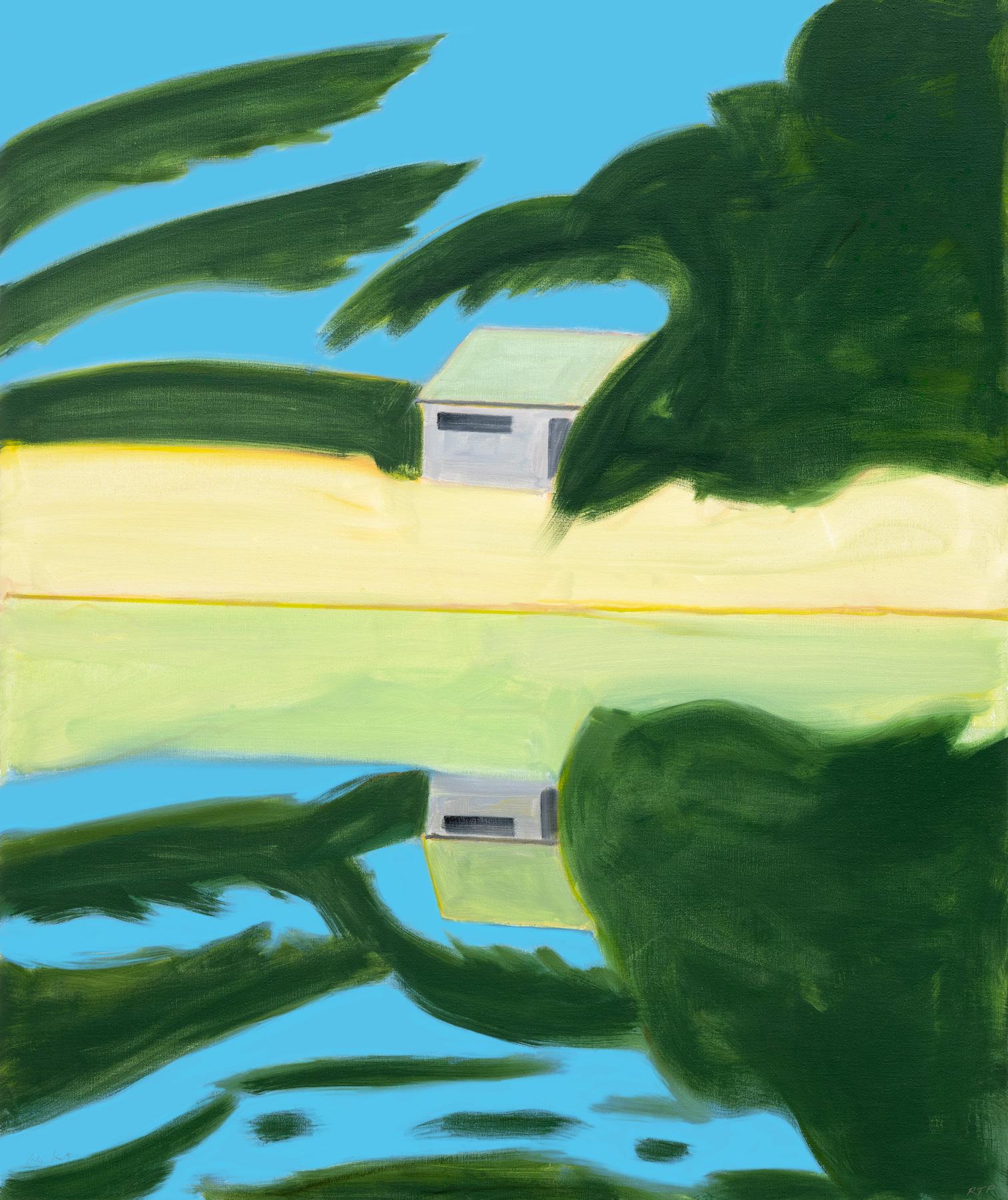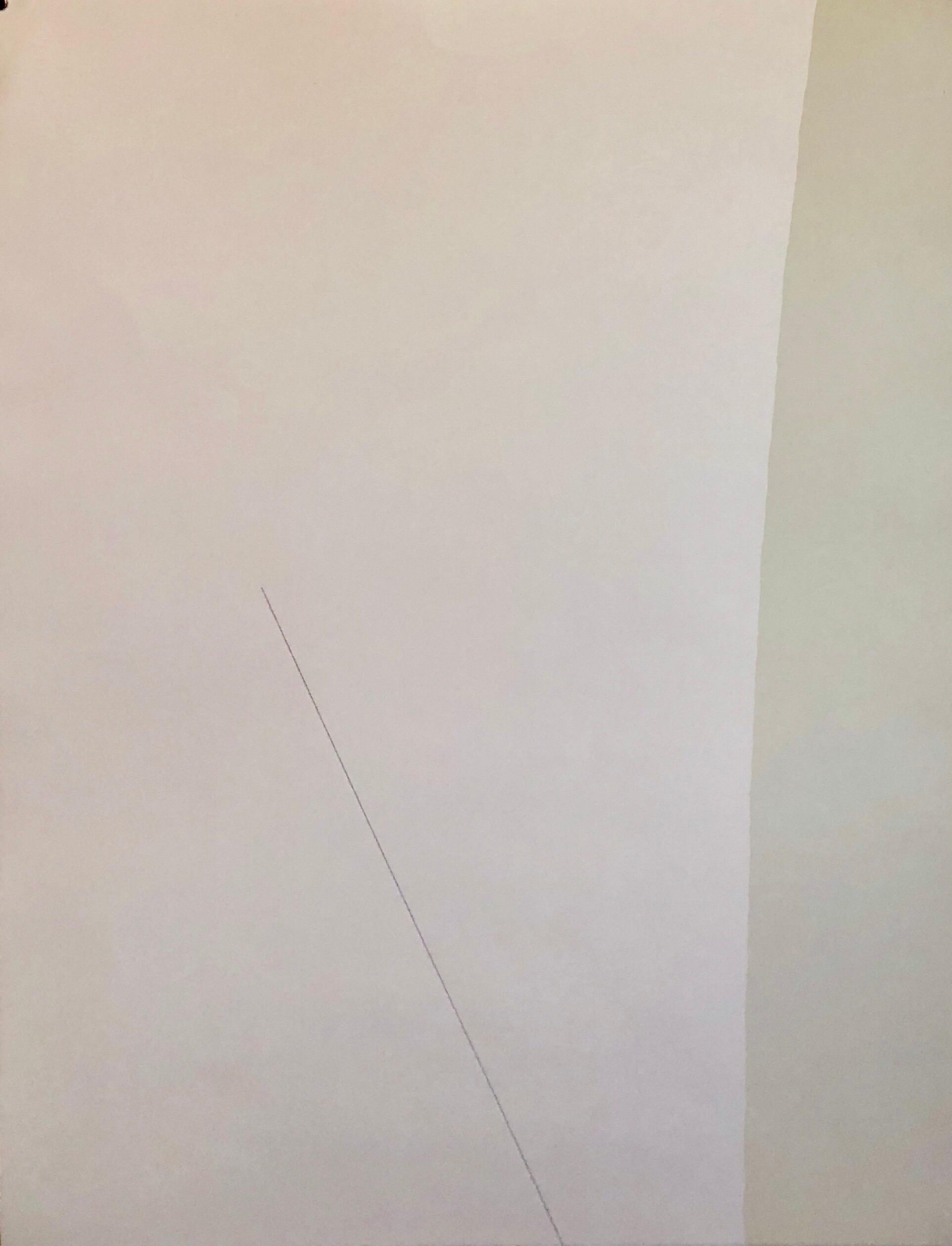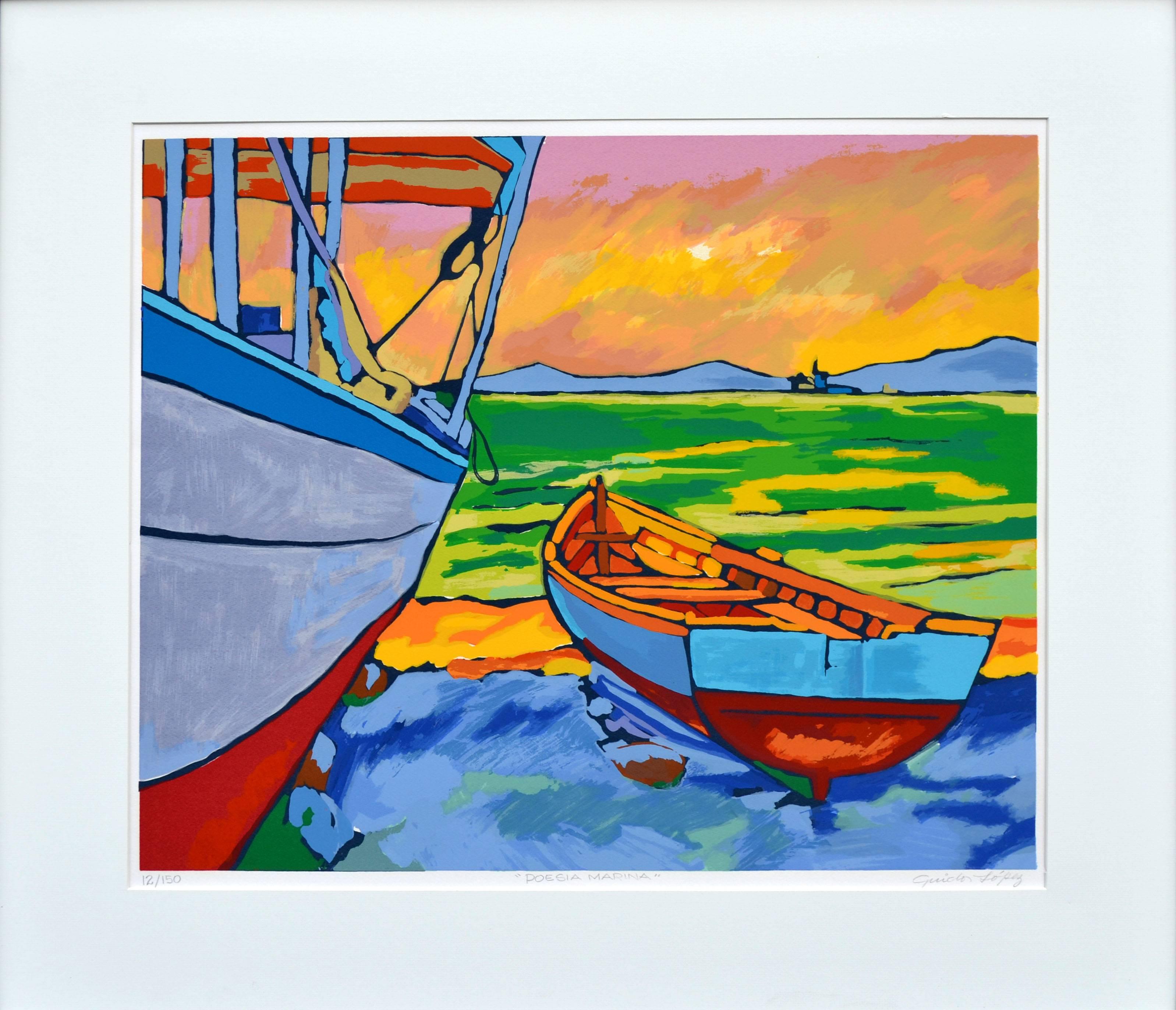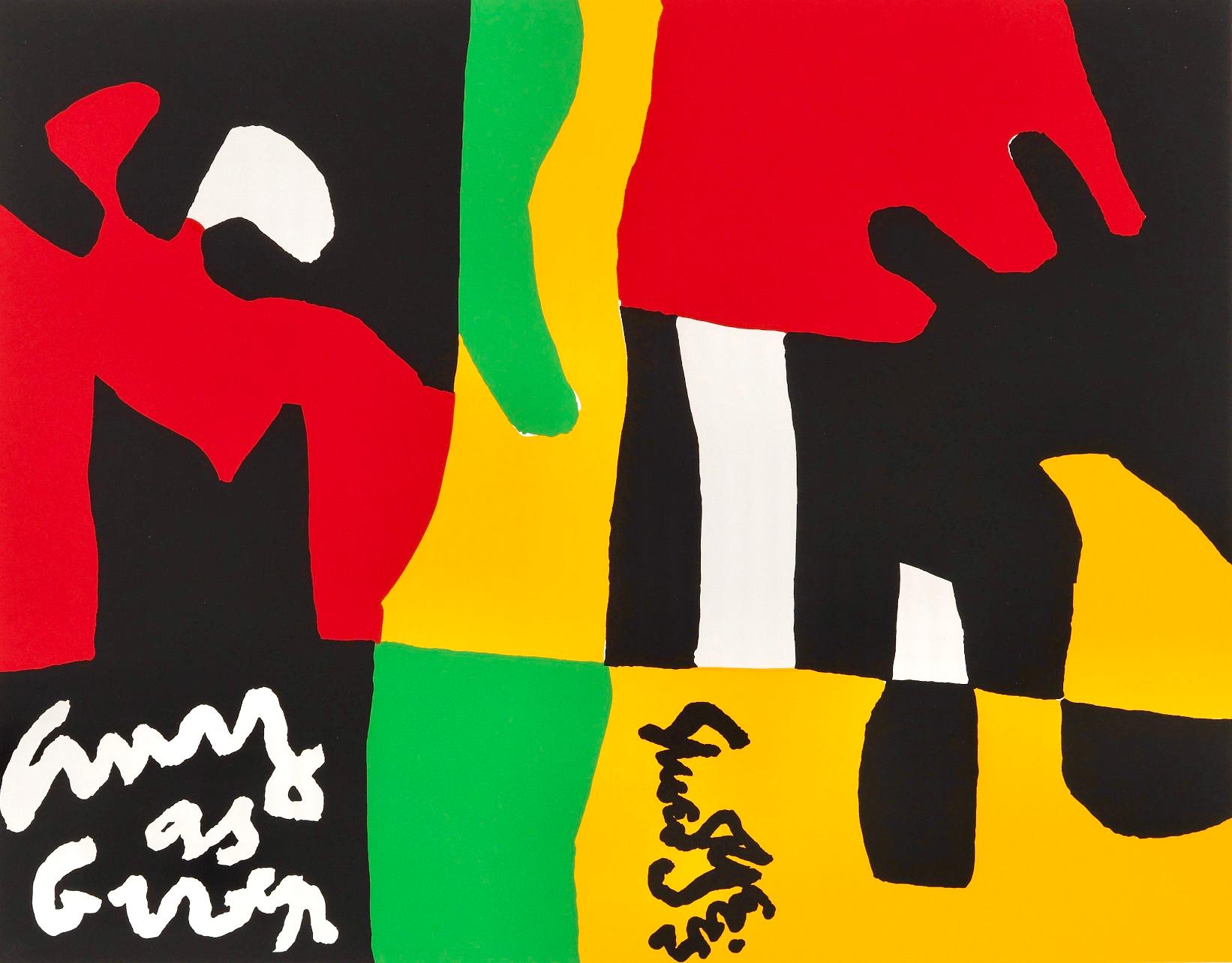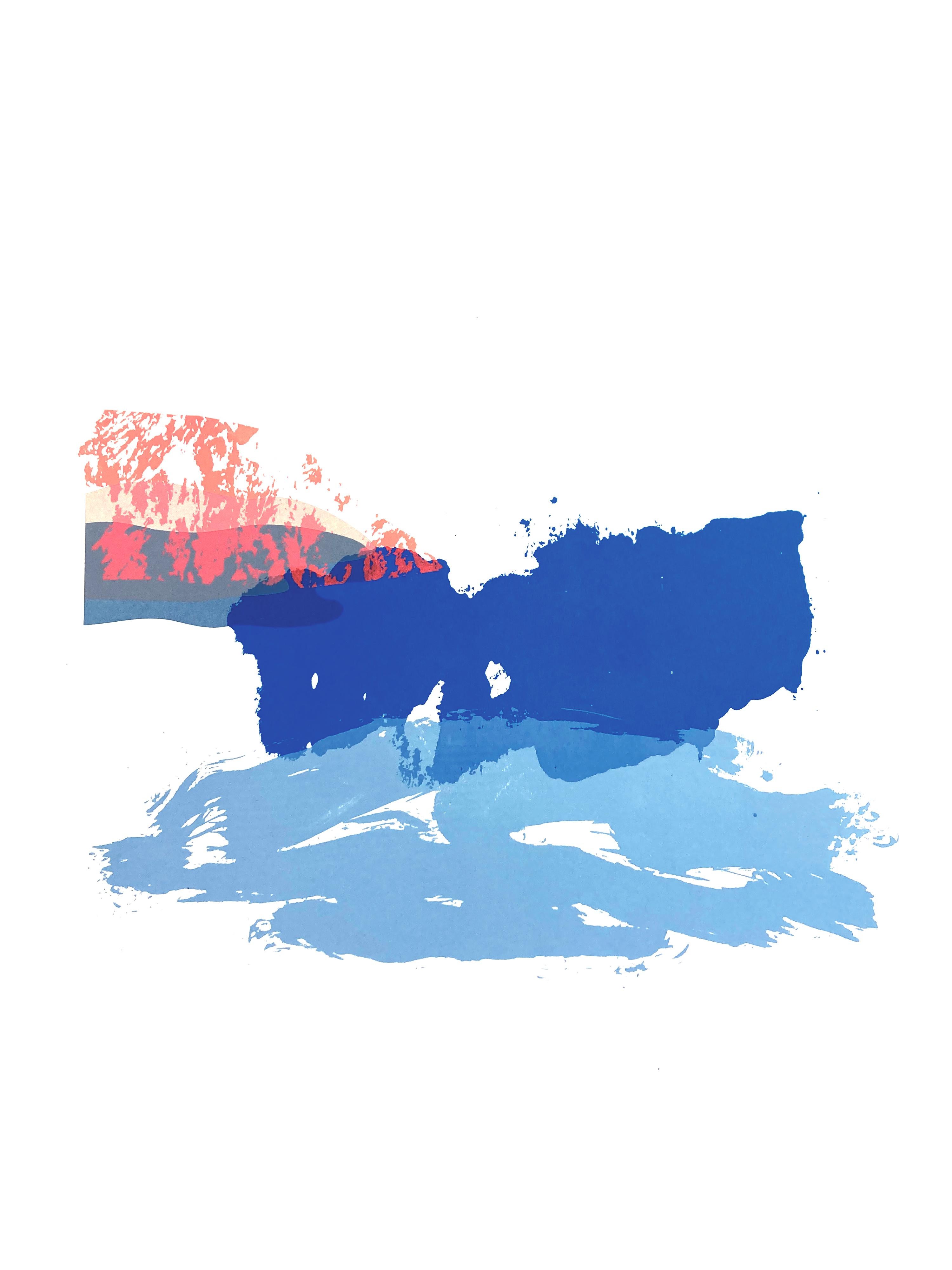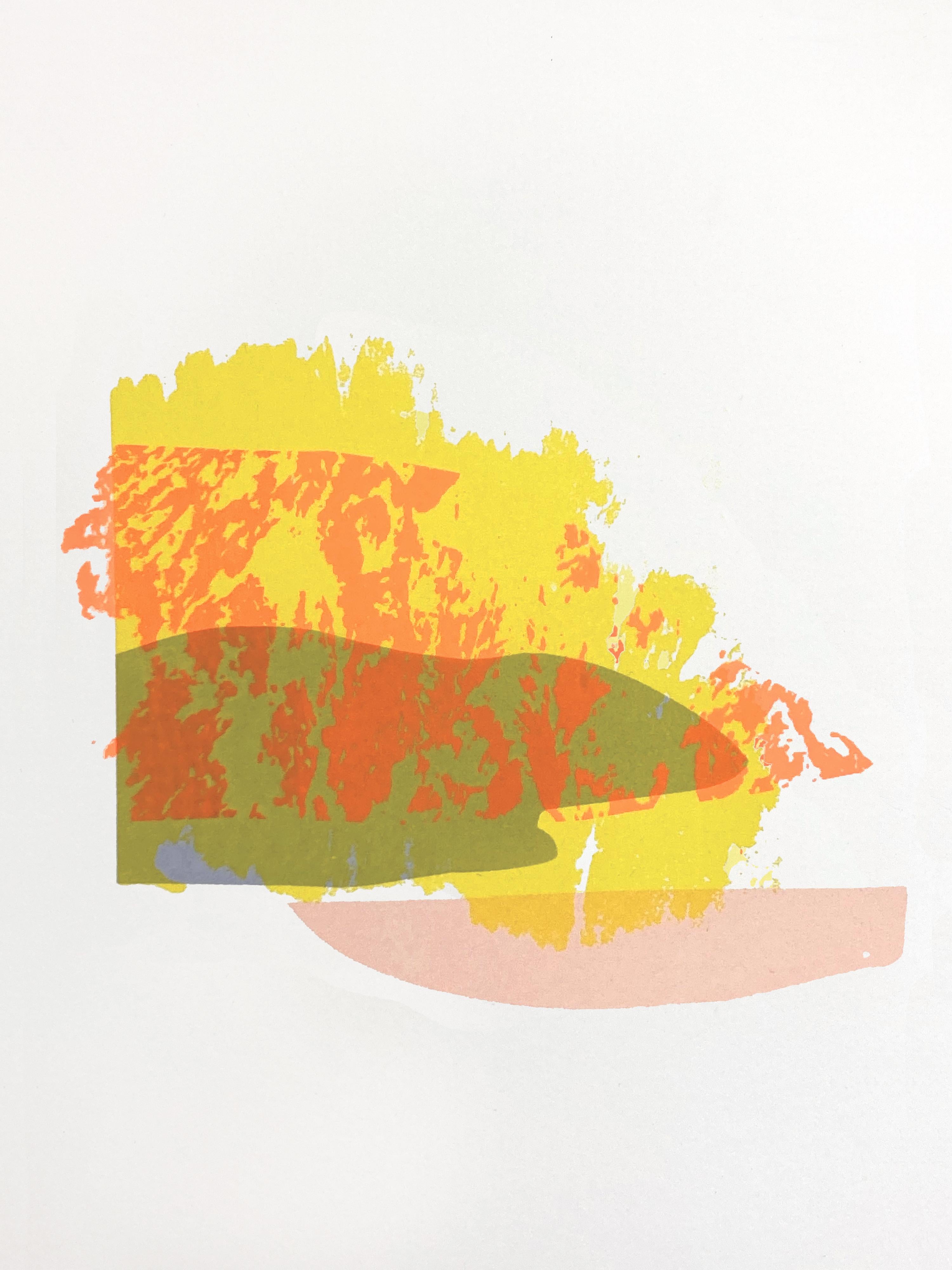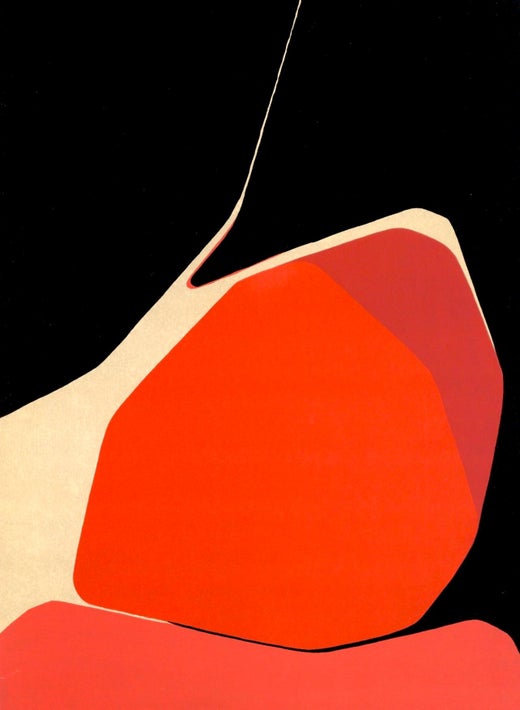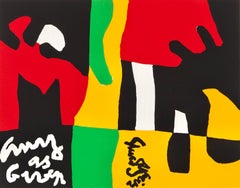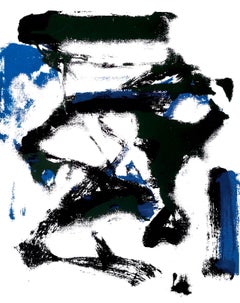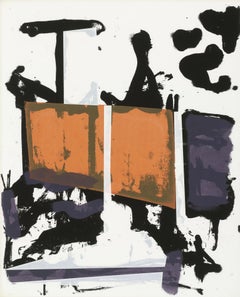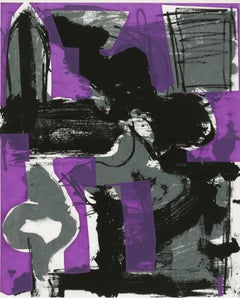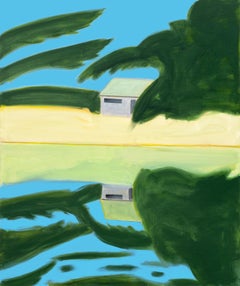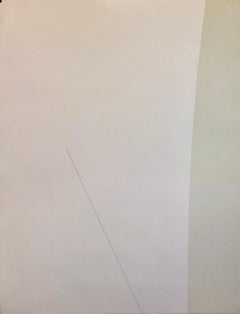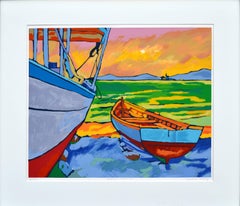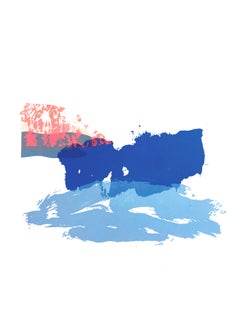Items Similar to Composition, Hommage à Aimé et Marguerite Maeght, Derrière le miroir
Want more images or videos?
Request additional images or videos from the seller
1 of 11
Pablo PalazueloComposition, Hommage à Aimé et Marguerite Maeght, Derrière le miroir1982
1982
$716
$89520% Off
£543.68
£679.5920% Off
€621.73
€777.1720% Off
CA$1,000.36
CA$1,250.4420% Off
A$1,112.61
A$1,390.7720% Off
CHF 580.97
CHF 726.2220% Off
MX$13,539.33
MX$16,924.1620% Off
NOK 7,419.91
NOK 9,274.8820% Off
SEK 6,958.56
SEK 8,698.2020% Off
DKK 4,640.24
DKK 5,800.3020% Off
Shipping
Retrieving quote...The 1stDibs Promise:
Authenticity Guarantee,
Money-Back Guarantee,
24-Hour Cancellation
About the Item
Silkscreen on vélin paper. Paper Size: 15 x 11 inches. Inscription: Signed in the plate and unnumbered, as issued. Notes: From the folio, Derrière le miroir, N° 250, Hommage à Aimé et Marguerite Maeght, 1982. Published by Galerie Maeght S.A., Paris; printed by l'Imprimerie moderne du Lion, Paris, 1963. Excerpted from the folio (translated from French), This special issue of Derrière le miroir was designed and defined by Aimé Maeght in the fall of 1980. He envisioned its publication as a celebration with which artists and writers published since 1946 were to be associated. He also chose François Chapon, president of the Reverdy Committee, to write the presentation. This Derrière le miroir number 250 took the form, after its disappearance on September 5, 198I, of a tribute to Aimé Maeght and his wife Marguerite Maeght who died four years earlier. XXIV artists agreed to create an original graphic work for this issue which includes the general table of all issues as well as excerpts from texts by XXXII writers. Finished printing on June 2, 1982 on the presses of the l'Imprimerie moderne du Lion in Paris. CL examples were printed on Arches vellum, numbered from I to CL, and some non-commercial examples constituting the original edition. Additional notes: Excerpted from a Christie’s, New York lot essay, The life span of Derrière le Miroir was thirty-five years. Publication began in 1946. Aimé Maeght, initiator of Derrière le Miroir, had already made few attempts to start publications illustrated with fine printed lithographs in colours in the years prior to the launch of Derrière le Miroir. The name, Derrière le Miroir was suggested by Jacques Kober, manager of Galerie Maeght. The gallery had opened in 1945; the first number of Derrière le Miroir was released a year later. For this first issue Geer van Velde was invited to create lithographs to illustrate the publication. The lithographs in the first issue was printed by Mourlot, Paris. The first three issues of Derrière le Miroir were unsuccessful for Maeght as far as the edition size—the initial print-runs were far too large. From 30,000 for the first issue, the number was taken down to 10,000 for numbers two and three, until Derrière le Miroir number four was published in an edition of 1500. Maeght instituted a policy whereby unsold issues were recycled and used for the fabrication of new paper for the coming editions—this served to both conserve resources and also usually result in ultimate edition sizes far less than 1,500. With number four, the permanent format for Derrière le Miroir was established. Lithographs in colours were key; text was limited to comments on the featuring artist's exhibition taking place in the Galerie Maeght, and this catalogue format was defining to Derrière le Miroir. Galerie Maeght took on the leading role in Paris and presented all main artists including Braque, Matisse, Chagall, Léger, Bonnard, Chillida and many more. So too did Derrière le Miroir. The idea of a magazine was meanwhile still on the mind of Aimé Maeght. He found an insert as a solution. Two, and later four, pages of art review were inserted from 1952 onwards. In 1968 this find had ripened to independency and the dream of Aimé Maeght was now a tangible fact named l'Art vivant. Derrière le Miroir was on it's own again. Over 250 issues in a row. At that point publisher Aimé Maeght wished to make a mark with the publication of an hommage to all who once contributed to the magazine which came in the form of issue number 250, but was delayed by the death of Aimé Maeght. It was published after number 253 in 1982 and became a tribute to Aimé and Marguérite Maeght and 35 years of friendship with artists and poets. The era of Derrière le Miroir was closed with that final publication.
PABLO PALAZUELO (1915-2007) was born in Madrid. When he was just ten years old, a portrait painter created a pastel depicting him with his sister, making a great impression on him and instilling a strong interest in drawing and painting. Palazuelo began studying architecture in Madrid in 1932 and later at the School of Arts and Crafts, Oxford, England (1934–36). While there he became familiar with the Tecton group of architects (1932–48) and the work of artists such as Jacob Epstein and Duncan Grant. He took the Intermediate Exams of the Royal Institute of British Architects before the Spanish Civil War began in 1936, and he returned to serve as a pilot in the Spanish army. Palazuelo decided not to return to England and began to devote much time to painting, exhibiting at the Galería Buchholz, Madrid, in 1945 alongside members of the young Madrid School. In 1946 or 1947 he became enamored with Paul Klee’s work, specifically his interest in geometry and abstract geometric forms found in nature. Juan Gris, Pablo Picasso, and Daniel Vázquez Díaz, who was Palazuelo’s painting instructor in the late 1940s, also influenced his early abstracted still lifes. However, by 1948, Palazuelo had eliminated all figuration in his paintings, pursuing purely abstract forms. He exhibited his first abstract work in the inaugural Salon de Mai, Paris, in 1949. In 1948, aided by a French government grant, he had moved to Paris, where he would remain until 1969, coming into contact with artists associated with Galerie Maeght, where he had his first solo exhibition in 1955 and continued to exhibit until the 1980s. His 1950s work delved deeper into abstract form, as he explored Arabic and Eastern thought, particularly the musical rhythms of Islamic art, infinity, and the notion of the “active imagination.” In 1953–54, he participated in Younger European Painters: A Selection at the Guggenheim Museum. Between 1954, with his first sculpture in melted bronze, Ascendant, and 1962, he gradually began creating work in three dimensions, and in the 1970s working specifically with open and closed polygonal shapes. In 1969 he returned to Spain and settled in his family’s home close to San Lorenzo de El Escorial. He developed his foundational themes of inner conscience, imagination, and transmutation in public works such as Lauda II for Madrid’s Barajas Airport, and his mural for the foyer of the Picasso Tower, Madrid, in 1990. Palazuelo participated in the Pittsburgh International (now Carnegie International, 1955), as well as exhibitions at Galería Juana Mordó, Madrid (his first Spanish exhibition, 1964), and Musée des beaux-arts, Chaux-de-Fonds, Switzerland (1970). The Museo nacional centro de arte Reina Sofía, Madrid, presented a major retrospective of his work (1995) with a further expansion of the show a decade later. The most recent Palazuelo retrospective was co-organized by Museu d’art contemporani de Barcelona in conjunction with the Guggenheim Museum Bilbao (2005–06). He received numerous awards, including the Kandinsky Prize (1952); Carnegie Prize from Carnegie Museum of Art, Pittsburgh (1958); and the Medalla de Oro al Mérito en las Bellas Artes, awarded by the Spanish Ministry of Culture (1982). Palazuelo died on October 3, 2007. In 2008, Pablo Palazuelo's painting, Virtus Marin VI, sold for $416,852 USD at Christie's Madrid, setting a world record for the artist.
- Creator:Pablo Palazuelo (1915 - 2007, Spanish)
- Creation Year:1982
- Dimensions:Height: 15 in (38.1 cm)Width: 11 in (27.94 cm)
- Medium:
- Movement & Style:
- Period:
- Condition:
- Gallery Location:Auburn Hills, MI
- Reference Number:1stDibs: LU1465216701322
Pablo Palazuelo
Pablo Palazuelo was one of the most significant Spanish abstract artists of the 20th century. He originally studied architecture at the University of Oxford but soon turned to visual arts. His work focused deeply on geometry, transformation, and the spiritual dimension of form. In 1948, he received a grant from the French Institute and moved to Paris, where he engaged with avant-garde circles and became influenced by geometric abstraction, Eastern philosophy, and alchemy. Style and Work: Early influences include Paul Klee and Bauhaus theory.
In the 1950s, he developed what he called “geometric transformations”, using abstract forms to explore metaphysical ideas.
From 1969 onward, he expanded into sculpture, giving three-dimensional form to his visual language.
He also created prints and worked on artist’s books. Awards and Recognition: Kandinsky Prize (1952)
Spain’s National Prize for Plastic Arts (1999)
Gold Medal for Merit in the Fine Arts (2004) Legacy: Palazuelo's work is held in major institutions such as the Museo Reina Sofía (Madrid), MACBA (Barcelona), and numerous international collections. He is celebrated for blending science, mysticism, and art through his unique abstract language.
About the Seller
4.9
Platinum Seller
Premium sellers with a 4.7+ rating and 24-hour response times
Established in 1978
1stDibs seller since 2021
1,155 sales on 1stDibs
Typical response time: <1 hour
- ShippingRetrieving quote...Shipping from: Auburn Hills, MI
- Return Policy
Authenticity Guarantee
In the unlikely event there’s an issue with an item’s authenticity, contact us within 1 year for a full refund. DetailsMoney-Back Guarantee
If your item is not as described, is damaged in transit, or does not arrive, contact us within 7 days for a full refund. Details24-Hour Cancellation
You have a 24-hour grace period in which to reconsider your purchase, with no questions asked.Vetted Professional Sellers
Our world-class sellers must adhere to strict standards for service and quality, maintaining the integrity of our listings.Price-Match Guarantee
If you find that a seller listed the same item for a lower price elsewhere, we’ll match it.Trusted Global Delivery
Our best-in-class carrier network provides specialized shipping options worldwide, including custom delivery.More From This Seller
View AllComposition (Cole/Myers 79), X + X, Ten Works by Ten Painters, Stuart Davis
By Stuart Davis
Located in Auburn Hills, MI
Silkscreen on Mohawk Superfine Bristol paper. Inscription: unsigned and unnumbered, as issued. Good condition. Notes: From the folio, X + X, Ten Works by Ten Painters, 1964. Publishe...
Category
1960s American Modern Landscape Prints
Materials
Screen
$1,996 Sale Price
20% Off
Free Shipping
Composition, The Poems, Joan Mitchell
By Joan Mitchell
Located in Auburn Hills, MI
Silkscreen on handmade Hahnemühle paper. Unsigned and unnumbered, as issued. Good condition. Notes: From the album, The Poems, 1960. Published and printed by Tiber Press, New York un...
Category
1960s Abstract Expressionist Abstract Prints
Materials
Screen
Composition, Salute, Grace Hartigan
By Grace Hartigan
Located in Auburn Hills, MI
Silkscreen on handmade Hahnemühle paper. Unsigned and unnumbered, as issued. Good condition. Notes: From the album, Salute, 1960. Published and printed by Tiber Press, New York under...
Category
1960s Abstract Expressionist Abstract Prints
Materials
Screen
Composition, Salute, Grace Hartigan
By Grace Hartigan
Located in Auburn Hills, MI
Silkscreen on handmade Hahnemühle paper. Unsigned and unnumbered, as issued. Good condition. Notes: From the album, Salute, 1960. Published and printed by Tiber Press, New York under...
Category
1960s Abstract Expressionist Abstract Prints
Materials
Screen
Composition, Salute, Grace Hartigan
By Grace Hartigan
Located in Auburn Hills, MI
Silkscreen on handmade Hahnemühle paper. Unsigned and unnumbered, as issued. Good condition. Notes: From the album, Salute, 1960. Published and printed by Tiber Press, New York under...
Category
1960s Abstract Expressionist Abstract Prints
Materials
Screen
Composition, The Poems, Joan Mitchell
By Joan Mitchell
Located in Auburn Hills, MI
Silkscreen on handmade Hahnemühle paper. Unsigned and unnumbered, as issued. Good condition. Notes: From the album, The Poems, 1960. Published and printed by Tiber Press, New York un...
Category
1960s Abstract Expressionist Abstract Prints
Materials
Screen
You May Also Like
Alex Katz 'Reflection 2'
By Alex Katz
Located in New York, NY
Alex Katz (born 1927)
Reflection 2
2021
Archival pigment ink on Innova Etching Cotton Rag 315 gsm fine art paper
47 x 39.5 inches (119 x 100.3 cm)
Edition of 81/100
With flat plane...
Category
2010s Modern Abstract Prints
Materials
Screen
Michael Gross Israeli Minimalist Conceptual Art, Abstract Jerusalem Silkscreen
By Michael Gross
Located in Surfside, FL
Michael Gross (Hebrew: מיכאל גרוס; 1920 – 4 November 2004) was an Israeli painter, sculptor and conceptual artist.
Michael Gross was born in Tiberias in the British-administered Palestine in 1920. He grew up in the farming village of Migdal. In 1939-1940, he left to study at the Teachers’ Training College in Jerusalem. In 1939, while he was away, his father was murdered by Arabs, and the family farm and home were destroyed. This event impacted on his work as an artist.
From 1943 to 1945, he studied architecture at Technion – Israel Institute of Technology in Haifa. From 1951 to 1954, he studied art at the École nationale supérieure des Beaux-Arts in Paris. He returned to Israel in 1954 and settled in the artists’ village of Ein Hod.
Gross's works are imbued with the light and spirit. They are minimalist, but never pure abstraction, always tied to natural form and laden with feeling. In his early paintings, Gross simplified form in order to concentrate on proportion, broad areas of color, and the size and placement of each element. This reductive process was also notable in his sculptures, whether in painted iron or other materials such as white concrete. In later paintings, he often juxtaposed large off-white panels with patches of tone, adding textured materials such as wooden beams, burlap and rope. Gross’s rough, freely-brushed surfaces, along with the use of soft pastel coloring, conjure up images of the Israeli landscape.
Education
1936-1940 Teachers Seminary, Jerusalem
1943-1945, Technion, Haifa, architecture, studied sculpture with Moshe Ziffer.
1951-1954 Beaux Arts, Paris with Michel Guimond
Teaching
1954 - 1954 Higher School of Education, Haifa.
1957-1960 Bezalel Academy of Arts and Design, Jerusalem
1960-1980 Oranim Art Institute, Tivon
Awards
1964: Hermann Struck Prize
1967: Dizengoff Prize
1971...
Category
1970s Modern Landscape Prints
Materials
Lithograph, Screen
Poezia Marina, Spain - Abstract Landscape
By Guido Lopez
Located in Soquel, CA
Bright and bold screen print by Spanish artist Guido Lopez (Spain, 20th century). Titled "Poezia Marina", signed lower right "Guido Lopez', 12/150. Unframed. Image 22.5"H x 25"L, Mat...
Category
Early 2000s Modern Landscape Prints
Materials
Screen
BIG CREEK - Modern Water Landscape Screen Printing, Joyful, Colorful. Edit. 2/6
By Anna Ładecka
Located in Salzburg, AT
Limited Edution 2/6, signed by artist.
Anna Ładecka is a Paris-based polish illustrator and painter.
Graduated from Warsaw Academy of Fine Arts, Master ...
Category
2010s Contemporary Landscape Prints
Materials
Screen, Archival Paper
CREEK 1 - Modern Water Landscape Screen Printing, Joyful, Colorful. Edit. 2/6
By Anna Ładecka
Located in Salzburg, AT
Limited Edution 2/6, signed by artist.
Anna Ładecka is a Paris-based polish illustrator and painter.
Graduated from Warsaw Academy of Fine Arts, Master of Art - Diploma in painting...
Category
2010s Contemporary Landscape Prints
Materials
Archival Paper, Screen
CREEK 2 - Modern Water Landscape Screen Printing, Joyful, Colorful. Edit. 3/6
By Anna Ładecka
Located in Salzburg, AT
Limited Edution 3/6, signed by artist.
Anna Ładecka is a Paris-based polish illustrator and painter.
Graduated from Warsaw Academy of Fine Arts, Master of Art - Diploma in painting...
Category
2010s Contemporary Landscape Prints
Materials
Archival Paper, Screen
